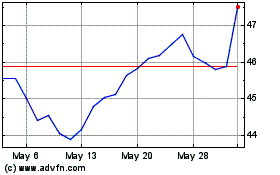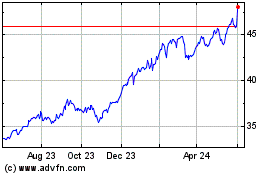The policy makers in India seem to have woken up finally after a
long slumber. More reform measures have been announced in the
country in the last 10 days than in the last ten years or so.
Among the reforms announced:
· Diesel subsidies
cut
· Stake sales in four
public sector companies
· Foreign direct
investment (FDI) guidelines relaxed
· Tax on foreign
borrowings by Indian corporates reduced
Major rating agencies, country’s central bank and the
multilateral institutions had been warning the government to take
up appropriate measures to boost investors’ confidence and
encourage capital inflows.
Earlier this year, S&P and Fitch had downgraded the outlook
on the country and warned of a sovereign credit downgrade. If
downgraded, India would be the first country in the BRICs block to
lose its investment grade rating. (Read: India ETFs: Trouble
On The Horizon?)
Government action on policy reforms came in face of significant
political risks. The cut in diesel subsidies—an important step
towards fiscal consolidation—was met with protests and withdrawal
of the support to the government by a key political ally.
(Read: 3 ETFs To Prepare For The Fiscal Cliff)
The same coalition partner—Trinamool Party—had opposed the
government effort to open the retail sector last year and had
succeeded in blocking the move. The party accuses the government of
pursuing "an anti-people's agenda’. New FDI rules allow up to 51%
foreign investment in mass retail outlets. (Read: Three Biggest
Mistakes of ETF Investing)
India’s fiscal deficit had widened to 5.9% of GDP in the fiscal
year ended March 31, substantially higher than the government's
target of 4.6%, mainly due to massive fuel and fertilizer
subsidies. The government targets to reduce the fiscal deficit to
5.1% of GDP in the current fiscal year which began April 1.
The economy grew at 5.5% during the first quarter of current
fiscal year (April-June), slightly up from 5.3% in the previous
quarter, but much slower than the 8.5% average of the preceding
eight years. The IMF expects India’s economy to grow at 6.1% in
2012, while the World Bank’s expectation stands at 6.9%. The
central bank lowered the India's growth forecast for the year to
6.5% from 7.5% in July. (Read: Forget the BRICs, Focus on the
PICKs)
As a result of the optimism generated by the reforms, foreign
investors poured more than $1 billion in the country’s stock
markets since the announcement, sending the stocks to their highest
levels in more than one year. The currency also recovered to its
multi-month high.
Many market participants believe that the reforms were mainly
aimed at avoiding the downgrade and the Indian government’s
commitment to implement the reforms still needs to be seen. Further
we cannot expect the reforms to result in accelerating the economic
growth or bringing down the fiscal deficit anytime soon.
Nevertheless the reforms are a welcome change after many years
of policy paralysis in the country. Government’s willingness to
take political risks even in the face of looming elections will go
a long way in improving the investors’ confidence in the country
even though the actual impact of the reforms will be seen only
after some time.
The central bank left the rates unchanged in its recent meeting
while reducing the cash reserve ratio for banks by 25 bps. While
many had expected a rate cut after the reforms announcement, the
central bank said that its decision was influenced by still-high
inflation rate (~7.5%) and other imbalances in the economy.
For investors seeking broad exposure to Indian equities,
following ETF choices are available:
Wisdom Tree India Earning
Fund (EPI)
EPI is the most popular ETF in this space, with about $1.1
billion in AUM. It tracks the Wisdom Tree India Earning
Index, which weights the Indian companies based on their earnings,
adjusted for a factor that takes into account the shares available
to the foreign investors. It charges the investors 83 basis points
for annual expenses.
In terms of sector weightings, the fund has highest exposure to
financials (28%), followed by energy (23%), information technology
(14%) and materials (13%).Top 10 holdings account for about 40% of
total holdings. The fund has returned 20.8% year-to-date.
PowerShares India Portfolio
(PIN)
PIN which tracks the Indus India Index, has assigned highest
weighting to the Energy sector (26%), followed by financials (18%)
and information technology (17%).
The expense ratio of the ETF is 79 basis points. Top ten
holdings constitute 53.7% of the holdings. The fund has returned
15.0% year-to-date.
S&P India Nifty 50 Index Fund
(INDY)
INDY follows S&P CNX Nifty Index, a free float market
cap weighted index of 50 largest and most liquid Indian companies.
It charges the investors 92 basis points for annual expenses.
Top 10 companies in the fund account for 56.47% of the fund.
Sector weighting are: financials (27), Information Technology (13%)
and power (13%). The fund has returned 23.1% year-to-date.
iShares MSCI India Index Fund
(INDA)
This is the newest in the space, launched in February this
year. The fund follows MSCI India Index, which is float adjusted
market cap weighted index. Holdings are not very different from the
older three discussed above but with the expense ratio at 0.65%,
this is the cheapest option now.
Financials enjoy highest weighting (29%), followed by
information technology (16%) and energy (13%). Top ten companies
account for more than half of the total holdings.
Want the
latest recommendations from Zacks Investment Research? Today, you
can download 7 Best Stocks for the
Next 30 Days. Click to
get this free report >>
WISDMTR-IN EARN (EPI): ETF Research Reports
ISHARS-M INDIA (INDA): ETF Research Reports
ISHARS-SP INDIA (INDY): ETF Research Reports
PWRSH-INDIA POR (PIN): ETF Research Reports
To read this article on Zacks.com click here.
Zacks Investment Research
Want the latest recommendations from Zacks Investment Research?
Today, you can download 7 Best Stocks for the Next 30 Days. Click
to get this free report
WisdomTree India Earnings (AMEX:EPI)
Historical Stock Chart
From Oct 2024 to Nov 2024

WisdomTree India Earnings (AMEX:EPI)
Historical Stock Chart
From Nov 2023 to Nov 2024
